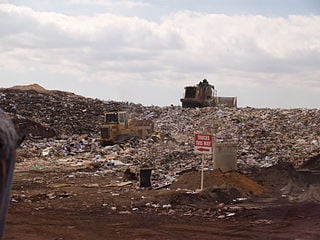Contemplative point 4: Consumption and waste go hand in hand.
Reduce consumption and you get reduced waste. Increase consumption and what you get is increased waste. In case you haven’t noticed it, there is a proportional relationship thing going on here between consumption and waste.
In the consumption/waste combination, never is consumption ever in the wrong. The waste component, now that’s a different story.
So, waste being the problem half, how, then, to deal with it is the question.
What to do with all the refuse
Waste is unavoidable. That there are many different kinds of waste, all of it requires dealing with (processing). And, different strategies (processes) are employed in doing just this very thing.

According to the U.S. Environmental Protection Agency (EPA), this is the least environmentally friendly way of dealing with the country’s discarded material.
At the other end of the spectrum, meanwhile, is what the EPA refers to as “Source Reduction and Reuse.”
From most-to-least preferred on what the federal environmental protection organization refers to as its “Waste Management Hierarchy,” are: “Source Reduction and Reuse,” “Recycling/Composting,” “Energy Recovery” and “Treatment and Disposal.” Such processes as anaerobic digestion, combustion, gasification, landfill gas recovery and pyrolization are included in the Energy Recovery grouping. (See: “Sustainable Materials Management: Non-Hazardous Materials and Waste Management Hierarchy” here).
On the food front, some important “food for thought”?

“And, the amount of that that is recovered, what is that? Some 87 million out of a total 254.1 million tons of MSW. Of that which is recovered, food comprises only 2.1 percent which is 1.827 million tons or 3.654 billion pounds. Compare this with paper and paperboard, the lion’s share, which represents 49.8 percent of the total or 43.326 million tons (86.652 billion pounds). That’s a HUGE difference.
“Keep in mind that of the MSW discarded in 2013, 167 million tons represents what wasn’t recovered. Food, meanwhile, accounted for 21.1 percent of that or 35.237 million tons or 70.474 billion pounds.
“The silver lining in this is that composting of food nationally went from 1.74 million tons in 2012 representing 4.8 percent to 5 percent or 1.84 million tons in 2013.”
(Source of quotations immediately above: “Food-Waste-Disposal-Series kickoff: Introduction, background”).
Electronics waste disposal is a no-less-serious matter.

The World Health Organization in “The cost of a polluted environment: 1.7 million child deaths a year, says WHO” Mar. 6, 2017 news release reveals, “… [E]merging environmental hazards, such as electronic and electrical waste (such as old mobile phones) that is improperly recycled, expose children to toxins which can lead to reduced intelligence, attention deficits, lung damage, and cancer. The generation of electronic and electrical waste is forecasted to increase by 19% between 2014 and 2018, to 50 million metric tonnes by 2018.”
In sum, waste is a big deal and the more swill, trash, green waste and other forms of non-hazardous and hazardous refuse can be reduced, reused and recycled, the better.
For more information …
On the Air Quality Matters blog waste is an area that has been both frequently discussed and discussed in depth.
Provided below is a list of articles (with accompanying links) each of which provides much more detailed information on this “not-going-away-anytime-soon” subject.
“Review: ‘Cooling It! No Hair Shirt Solutions to Global Warming’”
“Waste-to-watts, trash-to-cash ideas and more”
“Air-cleanup ‘challenge,’ other bright air-cleaning ideas, etc.”
“Air district insists open-field-ag-waste-burning resumption a ‘last-resort’ measure only”
“Biogas use the latest craze and all the rage?”
“Sustainable Agricultural Practices Series kickoff: A farm-waste-reuse success story”
“FWDS: Researchers hot on trail of heat from food; tho, capturing it, the tricky part”
“FWDS: Impact on landfill-produced methane from reduced food waste”
“Personal air-quality activity profile”
“No slam dunk on spent American car batteries getting recycled sustainably”
“No slam dunk on spent American car batteries getting recycled sustainably – one year on”
“CATS: To recycle e-waste sustainably or not – that is the question”
“In 2017, do as California is: Make air cleanup, job one – Part 2 (stationary sources)”
To be continued.
Images: Ashley Felton (top); Stephen Ausmus, U.S.D.A. Agricultural Research Service (middle)
This post was last revised on Dec. 13, 2020 @ 1:31 p.m. Pacific Standard Time.
– Alan Kandel
